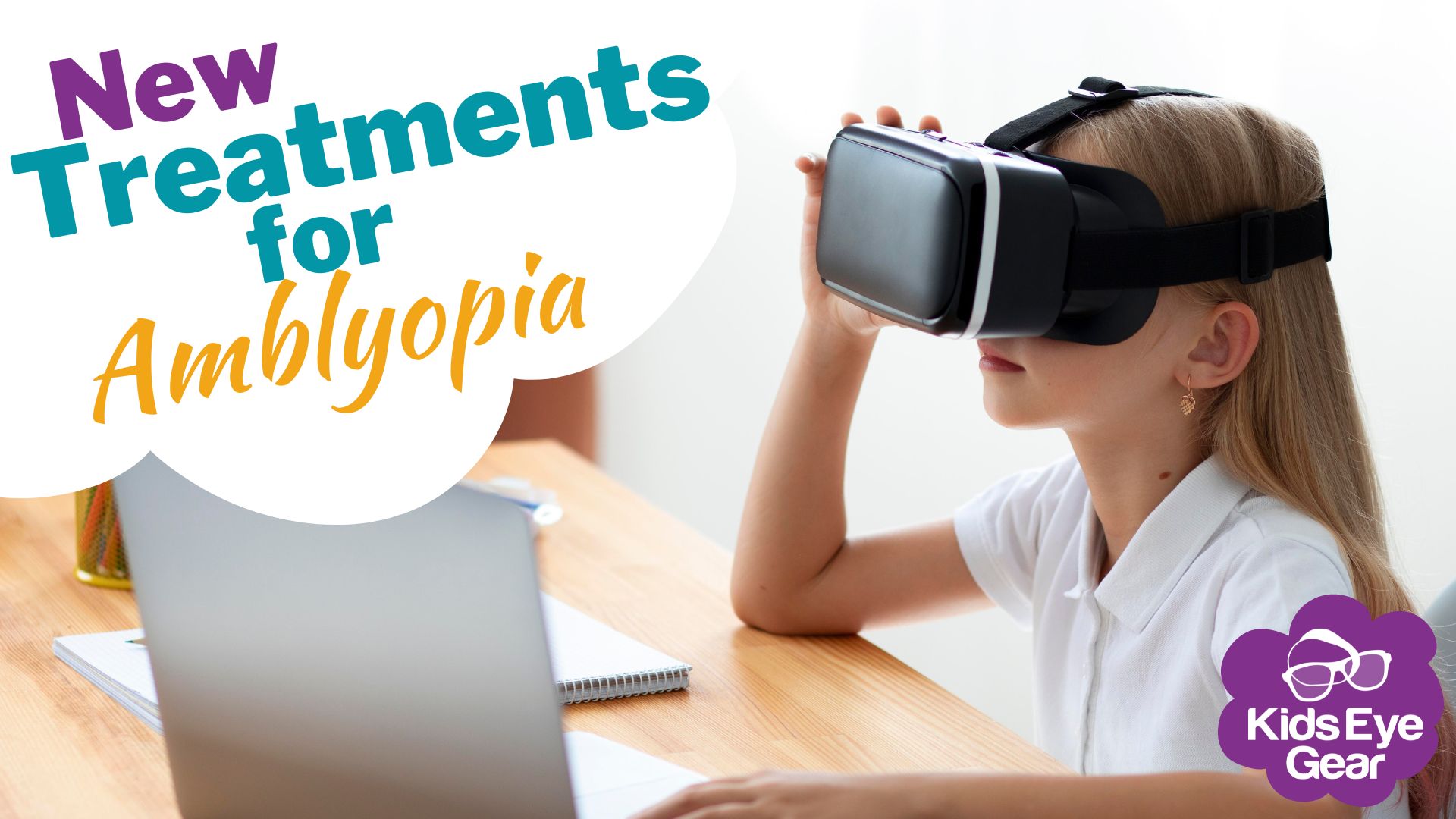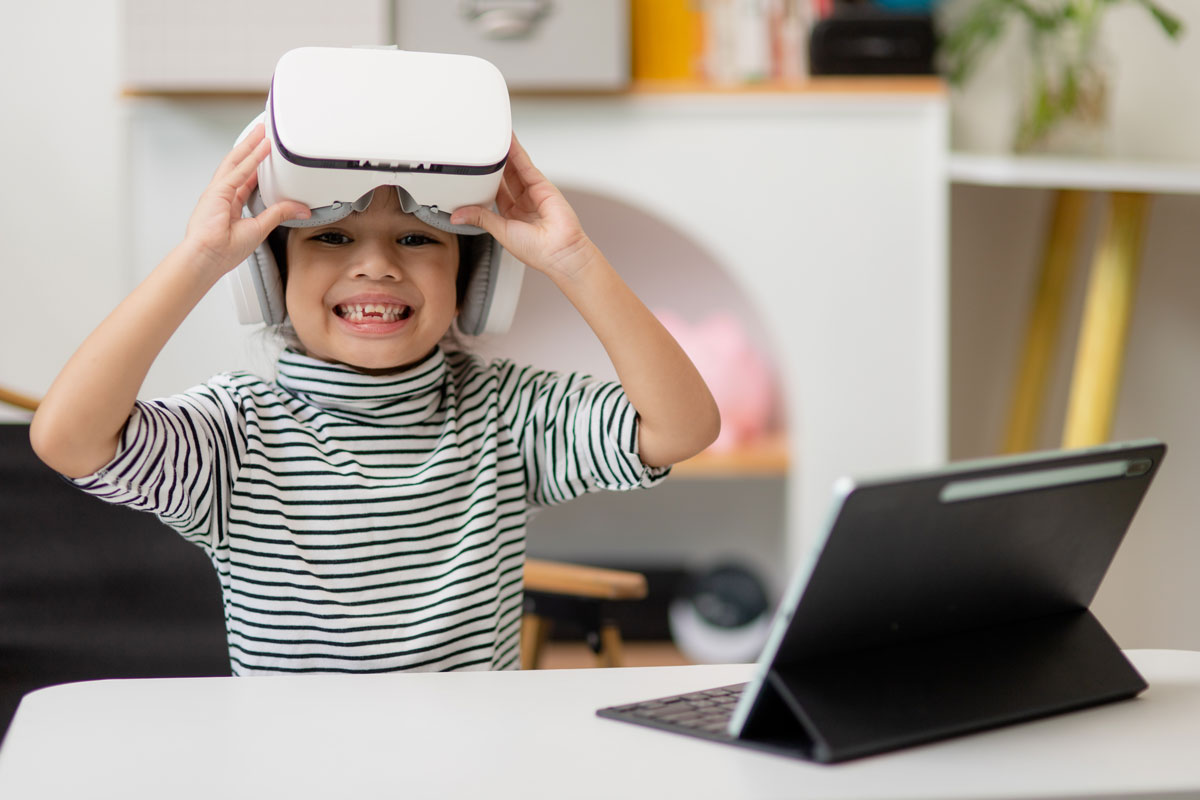Exciting Innovations Are Now Transforming The Treatment Of Amblyopia
16th Aug 2023

Exciting Innovations are now Transforming the Treatment of Amblyopia
Has your child been diagnosed with Amblyopia? If so, it's possible that this term is new to you, but you may be more familiar with the condition known as "lazy eye." It refers to a sight condition where the vision in one eye is reduced because the brain and the eye aren't working together properly. It's thought to impact around up to 3.6% of Australian children and, if left untreated, can prevent a child from developing normal vision.
Amblyopia isn't a new discovery, and the condition has been successfully treated for hundreds of years. Conventional treatment usually sees the stronger eye patched, so the brain forces the weaker eye to work harder and become stronger. This treatment, known as occlusion therapy, dates back to 900AD and is still widely used today. Another traditional treatment has been penalisation, where instead of covering the stronger eye, a lens or eye drops are used to blur vision in this eye so that the brain is forced to favour and use the weaker eye. While there's been much success with both of these methods, they also have their limitations (mainly, compliance!).
More recently, though, exciting and engaging new digital treatments for amblyopia have been developed. These new technologies use a mixture of specialised computer games and virtual reality tools to help train the weaker eye to focus on targets, instead of relying on the healthy one. It's a fun and interesting way to encourage the weaker eye to work harder and can offer an alternative for those reluctant to use patches or lenses. And with research suggesting these digital treatments are just as effective as traditional methods, they could be a great option if patching is proving a huge struggle.
How Digital Treatments for Amblyopia Work
Let’s dive into how these new digital treatments work.
New tech tools have made it possible for eye doctors to make the amblyopia treatment feel like an awesome adventure.

Imagine strapping on a virtual reality headset – that’s the magic with virtual reality (VR) therapy.
Using headsets that provide a completely immersive visual environment, VR therapy allows for precisely controlled dichoptic treatment. This means presenting distinct images to each eye. The VR experience provides stimulating visual input designed to target and train the weaker eye while also promoting better binocular vision. This treatment feels like playing a game, which makes it super fun for kids – helping with compliance.

What kid doesn’t like video games these days?
There are now a number of dichoptic video games specifically made for the treatment of amblyopia. These games send different visual inputs to each eye, forcing the brain to combine the images and promote binocular visual cortex development. The games integrate rewards and feedback to help fuel motivation and drive progress. This makes therapy seem more like "just playing a video game", which helps improve compliance.
Research undertaken by the University of Michigan has also emerged, showing that training both eyes together could be beneficial rather than patching and penalising the stronger eye. They've also linked this to sleep, with lab studies showing "enriched binocular experience followed by sleep optimally restores binocular visual cortical responses” – basically saying that good sleep after eye exercises is a real eye-opener (pun intended!). Of course, more comparative clinical studies are still needed, and it's expected results will vary between patients and types of amblyopia.
The Benefits of Digital Therapy for Amblyopia
Digital treatments have a number of advantages over traditional methods. One is the ability to precisely control stimulus delivery and provide a more engaging experience. Digital services can also offer improved monitoring and assessment, as well as provide precise data in real-time that allows clinicians to track progress with greater accuracy than ever before.
Additionally, mobile apps bring some of the techniques of vision therapy and eye exercises into patients’ homes. Apps can deliver amblyopia therapy through portals like tablets or smartphones. Features like reminders, instructions, and progress tracking help parents and children adhere to treatment. Apps allow for on-demand therapy while giving providers data to monitor improvement.
So what does this mean?
While more studies are required, initial findings suggest these alternatives to patching are promising and virtual reality and digital treatments may offer improved compliance, increased patient motivation, better visual outcomes in less time and a more comfortable experience.
This looks to be great news for families dealing with amblyopia, with doors opening to exciting new technologies as well as options for traditional treatments. It's very much a case of "watch this space" as technology and science continue to advance hand-in-hand.
Until these treatments have been clinically proven and available for all children, we’re here at Kids Eye Gear to help you with the old school patching.

